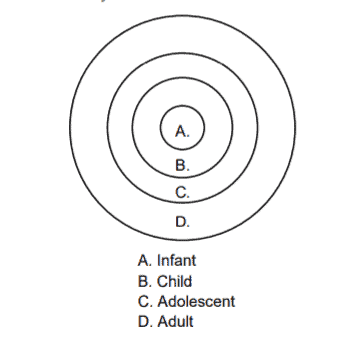Growing up hurts. Each of us has at least one story of being bullied, troubles at home, or a mean teacher.
These moments of trauma can cause wounds to your childlike joy, stopping you from being creative and playful later in life.
Inner child work is about healing these moments of trauma and integrating whatever shadows you might suppress into the subconscious. I have seen this work benefit myself and hundreds of community members here at HeroRise.
In this article, we will be exploring Shadow Work and the Inner Child.
What Is Inner Child And Shadow Work?
Shadow and Inner Child Work were both coined by renowned psychologist Carl Jung and are methods of integrating parts of the psyche that can be harmed by trauma. Though very similar, Shadow and Inner Child Work approach identity in different ways and can synergetically work together.
Inner Child work = adult processing/healing old childhood wounds.
Shadow Work = revealing trauma’s and wounds that our conscious mind suppresses
Inner Child Work is a specific technique to “re-parent” and heal past wounds, while Shadow Work helps you realize what wounds you even have and have been suppressing.
In this way, the two work really well with one another.
New to Shadow Work? Check out this beginner’s guide to Shadow Work.
I once worked with a man that had a lot of anger issues. He constantly exploded over the slightest thing. He didn’t realize that this was a reaction to seeing his father leaving him as a child.
Shadow Work helped him realize where the pattern came from, and then he underwent Inner Child Work to visualize himself as a child and process those old wounds.
Afterward, he found so much more freedom in his relationships, and he knew how to control his anger.
Let’s look a little deeper into what Inner Child Work is and how to use it alongside Shadow Work.
Inner Child Work: How It Works
Inner Child Work is a trauma-informed method to help adults that have experienced trauma, abuse, and neglect as children. The technique focuses on the unmet needs of childhood and how meeting them can lead to a more holistic, secure, and self-actualized person.
The technique originated from Carl Jung but was built upon by modern-day therapists such as Virginia Satir, John Bradshaw, Milton Erickson, and Hal Stone.
Inner Child Work is a newer therapy that utilizes a mixture of Internal Family System therapy, attachment theory, and depth-psychology.
The main idea is to allow someone to connect to the childlike aspects of their personality.
Psychologist Roberto Assagioli described the personality as having layers that develop at different ages and form the whole personality. Your childlike attributes develop as a kid and aren’t cast aside but built upon. If there is trauma or unresolved issues, you need to access that layer of yourself.

Recovering Authentic Personality
Another way of looking at Inner Child Work is that each of us has different parts to our personality.
Kind of like the movie Inside Out, where within each of us is a control room where different emotions have access to our “control board” which would be our personality.

The inner child is just one of those subpersonalities.
If that inner child hasn’t processed past trauma, then it can get combative, run away, or leave someone without childlike play and creativity.
Do You Have A Wounded Inner Child?
All of us have some trauma from our childhood, but the big question is if we have healed from the past.
You have a wounded child within you if you haven’t taken the time to process the past trauma.
You can tell if you have a wounded child by looking at how children act.
Children are free to express themselves, playful, and are expressive. If you have trouble with these, you probably have a wounded Inner child.
Here is a comparison of a Healed or Wounded Inner Child:
| Healthy Inner Child | Wounded Inner Child |
| Emotionally Vulnerable Sense of Innocents and wonderment Emotionally Sensitive Craves love and connection Open-minded Expressive | Closed and guarded Fear of abandonment Low self-esteem Can’t “let go” and play Want’s to be constantly cared for Emotionally insecure |
For myself, I had a lot of trauma around my self-expression because I was picked on a lot at home and at school, and it made me feel constricted around my creativity. Luckily, I found a therapist and creative couch in my 20’s that helped me heal that part of myself.
Without this inner work, I would never have pursued my passion for music or created the HeroRise Masculine Archetype Deck.
If you feel stuck around your self-expression, I highly suggest looking into Inner Child Work.
Benefits of Inner Child Work
Having a healthy relationship with the childlike parts of your personality is important for mental health and well-being.
A study on Health throughout the lifespan by Luleå University found that Inner Child Work can lead towards a stronger sense of safety, love, support, and creativity in people’s lives.
Inner Child work has also been shown to help with relationship issues and depression and can be used to increase your ability to find happiness in your life.
Inner Child Work can help you:
- Cultivate your free and creative self
- Stop emotional meltdowns (tantrums/outbursts)
- Heal toxic shame and guilt
- Help you find deeper love and support in your relationships
- Create and hold stronger boundaries
- Make requests without becoming irritated or overreacting
By doing Inner Child Work and Shadow Work, you will integrate different aspects of your personality to make a more stable and holistic person.
Healing The Inner Child: 5 Steps
Healing the Inner Child is about getting in touch with the child that lives within you, and it’s about listening to that part of yourself and helping it express unprocessed feelings.
Only after you process whatever hurt or stuck memory will you be able to move on and find a healthy inner child.
You can heal your inner child with these five steps:
- Become aware of the trauma or negative pattern. This first step is about bringing any repressed aspects of your personality to light. Shadow work is perfect for this first step.
- Explore where the trauma came from. Take the time to reflect on where the trauma/trigger/negative pattern first came up. Ask yourself how old you were, where you were, and what was happening.
- Use active imagination to go back to that time. If it feels safe, try to go back to the moment this first trauma happened. Trie to watch with the eyes of a compassionate adult.
- Support your inner child. Approach your younger self in your memory and comfort yourself. Be a supportive ally for yourself in that movement of hurt. If no one was there for you then, someone (yourself) is there for you now.
- Repeat this process as often as you would like. It can take a bit to process these deep emotions from your past. Be patient and just show up. Eventually, you will feel a lot of healing and a deeper connection to your Inner Child.
You can use this method to explore any anxieties, insecurities, or traumas you may have.
This can be a very powerful and healing practice.
Inner Child Shadow Work Journal Prompts
Another powerful tool for exploring the Shadow and the Inner Child is Writing Prompts.
For this activity, set aside some time for you to reflect and write.
When answering these prompts in a journal or notebook, try to write as fast as you can. You’re trying to get into a flow state with freestyle writing, and this allows your subconscious to bubble up.
Don’t edit or worry about spelling, just write.
Here is a few writing prompts:
🖊️ What were your favorite activities as a kid? Why did you stop? Did anything happen?
🖊️ What do I miss the most about being a kid? Why don’t I do that anymore?
🖊️ What could I do to bring playfulness and creativity into my life?
🖊️ Do you believe you had a good childhood? When you were a kid, how functional was your home life was growing up?
In Conclusion:
Inner Child Work is a part of Shadow Work.
Shadow Work is a helpful technique in discovering wounds you have pushed outside the conscious mind. It can help you realize attributes of your personality that you aren’t proud of, or that you try and not notice.
Once you have that awareness through Shadow Work, you can heal unprocessed emotions with Inner Child Work.
This work has been a big part of my own self-growth.
I have spent years uncovering wounds from my childhood that still impact my reactions and decisions today. Like how I was picked on in the gym, making me think that I am not athletic. It took me years to figure out it was this one wound that held me back from doing sports. Once I moved past that, I could explore Martial Arts with a new sense of freedom.
As a kid, I also moved a lot, which added uncertainty to all my relationships. I never wanted to get too close to my friends because I was going to move away in a year or so. This became a pattern that affected my intimate relationships as an adult.
Inner Child Work gave me the tools to recognize these patterns, heal them, and integrate the inner child into my life.
Shadow and Inner Child Work can be a powerful tool for your self-development. I hope the techniques in this article will help you along the path of healing and growth.
I would also suggest learning more about Shadow Work with the following articles:




